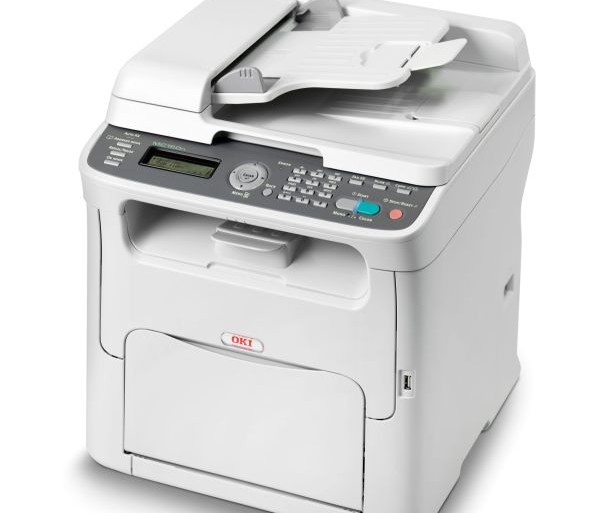The humble printer threatens business, CO2 disasters

Manage them or waste, waste, waste
Of all the environmental initiatives out there, what probably does not cross the mind of the average office worker are pieces of equipment many companies will take for granted: the humble printing devices. But actually, according to managed printing services company Oki, organisations can cut emissions and costs by paying a little more attention.
Although not every company has a need for managed printing – say, start-ups or small businesses – in larger organisations it can be a critical factor in doing away with unneccessary emissions, energy spending, and paper wasting. Oki’s managed print services manager, Rob Brown, pointed out to ChannelBiz UK that analyst data reveals most organisations have maybe ten times more printing devices than they actually need.
“If you take that into a larger organisation, coroprate or public sector, that could mean they have hundreds more than they actually need,” Brown said. You have to figure out what they’ve got in place and working out what they need, and according to Brown, they are quite often at odds with each other.
“Maybe someone has gone out and bought a monoprinter, then they needed colour so they bought that, then needed to scan, so they bought a multi function printer, and they already had a fax sitting there,” Brown said. “One device can do the job of all the devices so there are obvious areas where you can save for the client.” The clear area to save in is reducing the number of devices, but companies must also bring in best of breed kit in terms of energy consumption and operational mode: in the long haul, having power-off and auto-power off functions helps cut actual co2 emissions.
When Apple’s iPad kicked off the tablet hype machine in the consumer space, there were whisperings from America in particular that the world was going to head towards ‘paperless offices’. This is positive. But it’s not going to happen any time soon.
“Hard copy is required for somebody to put a signature to paper, for example with finance documents,” Brown points out. He cited a client that had managed print services running in retail – there were a lot of sales where documents needed to be signed and scanned and sent off to the finance house. “There will always be a need for that hard copy,” Brown said. “There’s always going to be that requirement”.
The company, as much as any other, believes recommending everyone print less is both right and proper as a duty to the environment, but, Brown said, there is a marked difference in claiming the world is fast approaching a paperless office and simply encouraging people to be more responsible, to ditch the old bad habits.
And bad habits there are. Brown told ChannelBiz UK about one public sector organisation where he found a man who was printing out every single email that arrived. It was “a chap whose desk I walked past, was sitting there printing out all of his emails – why on earth do you need to do that”? This, then, would be the reason managed print services have the option to put controls in place to restrict individual user levels.
“Certain user habits, you either have to accept them or they have to be instructed by their own organisations,” Brown said. “They have been instructed by somebody on high that habits have to change – we can do things to help”.
For a lot of people, being careful with printing is just not on their agenda.
“Nobody thinks about the impact that a prince device has, whatever it may be, and about the impact the use of that has,” Brown said. “We have from our own data the average daily use of a device is something like five percent, so 95 percent of the time it is sitting idol. The importance of power-off functions and deep sleep modes become critical as does making sure you have the right number of devices rather than up to 10 times more than you need”.
According to Brown, the majority simply do not think about it: they just think about printing something out because they need a document and the process stops there. “They don’t really care how they do it, the most care people probably give to it is how far they’ve got to walk to pick it up,” he said. “They don’t think about how it affects them until such a point where there’s a breakdown or a problem with the device.
“Fundamentally it’s just something almost ubiquitous, like turning on the tap, and the water coming out,” he said. “You don’t think about the fact that it’s consuming energy or that you could have double sided a job to save paper.”
Of all the departments in the UK to need managed printing, the Department for Environment, Food and Rural Affairs (DEFRA) was one of them. Brown said that this is not specifically damning because printing is an often overlooked cost for everyday usage, there is a business requirement which means a lot of output for documents and reports, and there’s a number of different organisations within DEFRA. But, using Oki, the department was able to almost halve their carbon footprint.
“If you take them as an example of a large public sector body,” Brown said, “they didn’t have an idea of how many devices they had – they had three times more than they actually needed.” The company got them down from 1,300 to 500 devices.
The big picture, Brown believes, is not always easy to get across. But, it’s “worth time investing to get a much greater benefit than just saying we’ll buy half a dozen new devices now and make sure they’re energy efficient”. Unless you look at the entire organisation, you’re missing the point.